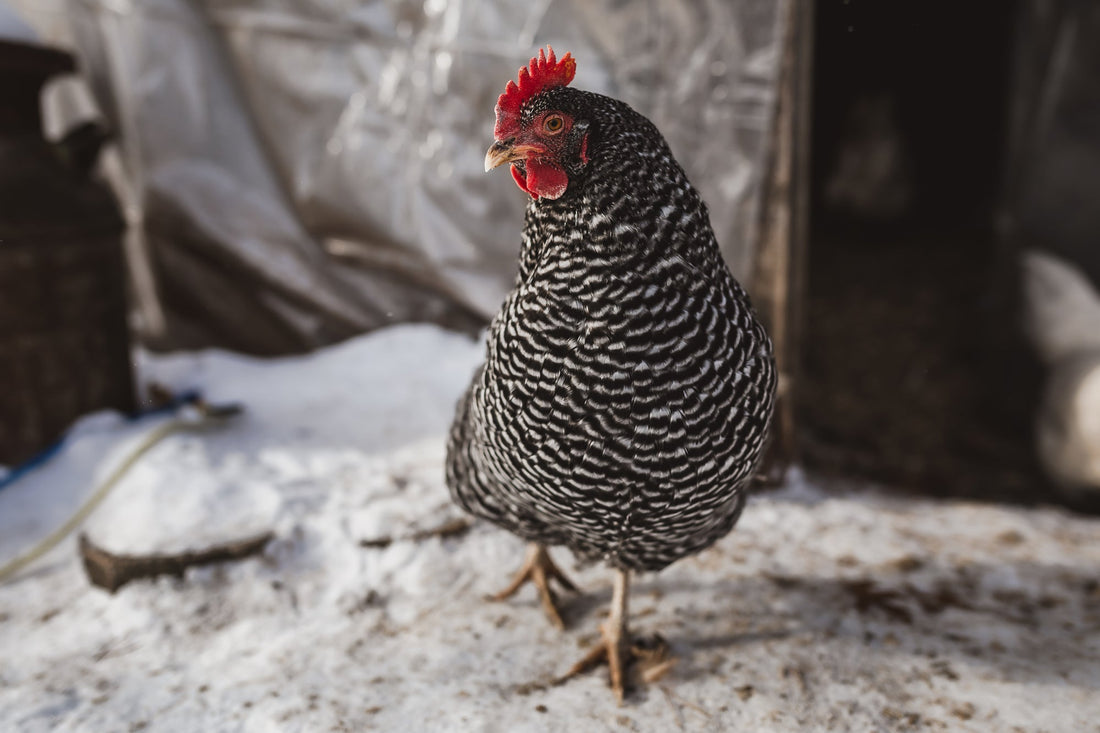As winter approaches, chicken keepers must be vigilant about the health and well-being of their feathered friends, particularly in guarding against frostbite. Frostbite is a serious condition that can affect chickens during the cold months, potentially leading to significant health issues. This article aims to provide comprehensive guidance on recognizing, preventing, and treating frostbite in chickens, offering practical advice to ensure your flock remains healthy and happy throughout the winter.
What is Frostbite?
Understanding Frostbite in Chickens
Frostbite is a condition where the skin and other external tissues freeze due to exposure to cold temperatures, particularly when combined with wind and moisture. For chickens, this typically occurs in the comb, wattles, and feet, which are more exposed and less insulated. However, it's important to understand that frostbite is not just a surface-level issue; it can have deeper implications for a chicken's overall health.
How Frostbite Develops in Chickens
Temperature and Wind Chill: Frostbite is most likely to occur during periods of extreme cold, especially when wind chill factors make the temperatures more severe. Chickens are generally hardy, but their combs, wattles, and feet are vulnerable in harsh conditions.
Moisture: Damp conditions can accelerate the onset of frostbite. Wet skin or feathers lose heat faster, increasing the risk significantly.
Blood Flow and Tissue Damage: In response to cold, a chicken's body will reduce blood flow to extremities (like combs, wattles, and toes) to conserve heat for vital organs. This reduced circulation makes the extremities even more susceptible to freezing. Once the tissue freezes, ice crystals can form within cells, causing cellular damage.
The Stages of Frostbite in Chickens
Frostnip: This is the earliest and mildest form, where only the skin's surface freezes. The affected areas may appear pale. At this stage, the damage is minimal and often reversible.
Superficial Frostbite: The skin may feel warm as it starts to thaw, but it might turn red and swollen. Blisters can form 24-48 hours after rewarming.
Deep Frostbite: This is the most severe stage, where the freezing reaches deeper tissues. Skin can turn blue or black, indicating that the tissue is dead. This stage can lead to long-term damage, including tissue loss.
Systemic Impact of Frostbite
While frostbite often appears localized, its effects can be systemic. A chicken with severe frostbite may show signs of distress, decreased appetite, and reduced activity levels. The stress of injury can weaken the immune system, making the bird more susceptible to other illnesses.
Long-Term Consequences
Recovery from frostbite depends on the severity of the damage. Mild cases may resolve without lasting effects, but severe cases can lead to permanent tissue damage or loss. Chickens who have suffered from frostbite once may be more prone to it in the future, necessitating extra care in subsequent cold seasons.
Recognizing Frostbite in Chickens
Early Signs: Initially, the affected areas may appear pale or grayish. You might notice your chickens are less active or showing signs of discomfort.
Progression: As frostbite worsens, these areas may turn dark blue or black due to a lack of blood flow. The tissue may become hard and brittle.
Severe Cases: In extreme cases, the affected areas might develop blisters or open sores, and there's a risk of infection. In the worst cases, tissue necrosis (death of tissue) can occur, which may necessitate veterinary intervention.
Preventing Frostbite
Proper Coop Ventilation: Ensure your chicken coop has adequate ventilation to reduce moisture buildup, which can exacerbate frostbite risks.
Insulation and Warmth: Insulating your coop and providing a heat source can help maintain a warmer environment. However, avoid overheating as it can cause other health issues.
Minimize Exposure: Limit the time your chickens spend outside on extremely cold or damp days.
Protective Measures: Applying a thin layer of petroleum jelly on combs and wattles can provide some protection against frostbite.
Treating Frostbite in Chickens
Gradual Warming: If you suspect frostbite, gently warm the affected area. Avoid using direct heat sources like blow dryers as they can cause more damage.
Keep Dry and Clean: Ensure the affected areas are kept clean and dry to prevent infection.
Veterinary Care: In cases of severe frostbite, consult a veterinarian. They may prescribe antibiotics to prevent secondary infections or recommend other treatments.
Supportive Care: Provide a stress-free environment with easy access to food and water. Monitor the chicken closely for any signs of pain or infection.
Long-Term Care and Observation
After a chicken has suffered frostbite, it's essential to monitor them closely for signs of recovery or worsening conditions. In some cases, the affected tissue may eventually fall off, and the chicken can adapt and continue living a healthy life. However, they may be more susceptible to frostbite in the future, so preventative measures
become even more critical.
Nutritional Support
Boosting your chickens' diet during winter can also aid in their recovery from frostbite and enhance their overall resilience against cold weather. Incorporate foods high in vitamins and protein to strengthen their immune system. Also, ensure they have continuous access to unfrozen water, as hydration plays a crucial role in maintaining health during cold periods.
Creating a Winter-Safe Environment
Besides direct frostbite care, creating a winter-safe environment for your chickens is vital. This includes:
Draft-Free Coop: Ensure the coop is free from drafts, as cold winds can significantly increase the risk of frostbite.
Roosting Bars: Provide adequate roosting space for your chickens. Roosting helps them keep their feet warm and dry, reducing the risk of frostbite.
Bedding: Regularly change the bedding to keep it dry and clean. Wet bedding can lead to damp conditions, which is a contributing factor to frostbite.
Regular Health Checks
During winter, it’s essential to conduct regular health checks on your chickens. Pay close attention to their behavior, appetite, and physical appearance. Early detection of frostbite or any other health issue is crucial for effective treatment and recovery.
Community and Support
Engaging with a community of fellow chicken keepers can be incredibly beneficial. Sharing experiences and tips can help you better prepare and respond to winter challenges, including frostbite. Online forums, local farming groups, and poultry clubs are great resources for advice and support.
Frostbite in chickens during winter is a serious concern, but with proper knowledge, preventative measures, and timely treatment, you can protect your flock from this painful condition. By ensuring a warm, dry, and comfortable environment, monitoring their health regularly, and being prepared to take action if frostbite occurs, you can help your chickens navigate the cold months with minimal discomfort and risk. Remember, a healthy chicken is a happy chicken, and as a responsible chicken keeper, their well-being is in your hands.
Stay informed, stay prepared, and here's to a healthy flock this winter season! 🐔❄️

